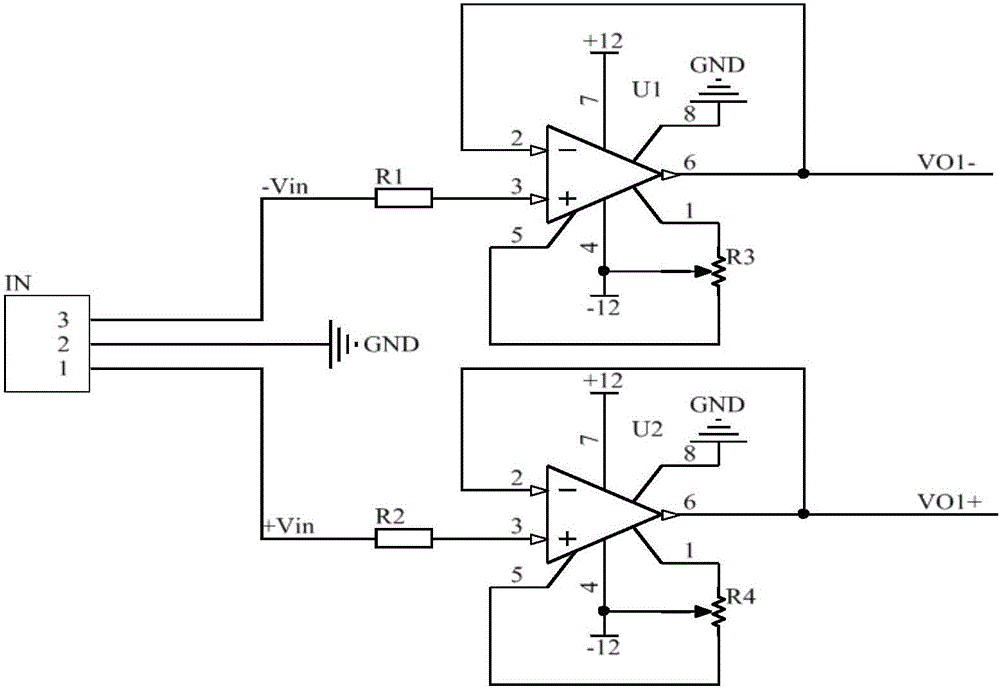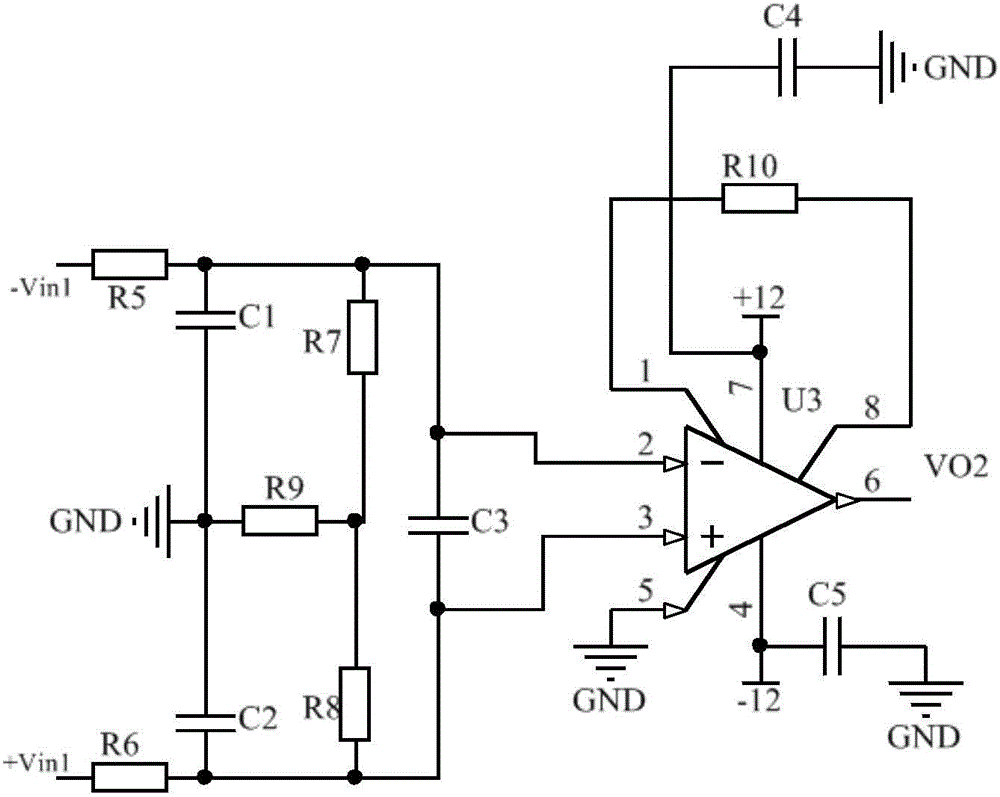Weak plant electrical signal amplifier
An electric signal and amplifier technology, which is applied in the field of plant weak electric signal amplifiers, can solve problems such as dependence on imports, noise, and precision limitations, and achieve the effects of suppressing power frequency interference, suppressing high-frequency noise, and high design performance
- Summary
- Abstract
- Description
- Claims
- Application Information
AI Technical Summary
Problems solved by technology
Method used
Image
Examples
Embodiment Construction
[0029] Since plant electrical signals play an extremely important role in plant growth and development, the study of plant electrical signals helps to explore the mechanism of plants responding to environmental stimuli more deeply. Not only that, the collection and analysis of plant electrical signals can be compared with remote sensing technology. In combination, through the analysis of electrical signals to judge possible problems such as drought, pests and diseases in farmland or forests, remote supervision of farmland or forests can be realized. Therefore, the present invention combines some unique characteristics of plant electrophysiological signals to provide a plant weak electrical signal amplifier, which belongs to the multipurpose weak voltage signal amplifier for plant electrophysiology. The present invention will be described in detail below in conjunction with the accompanying drawings and embodiments.
[0030] Such as figure 1 As shown, the present invention pro...
PUM
 Login to View More
Login to View More Abstract
Description
Claims
Application Information
 Login to View More
Login to View More - R&D
- Intellectual Property
- Life Sciences
- Materials
- Tech Scout
- Unparalleled Data Quality
- Higher Quality Content
- 60% Fewer Hallucinations
Browse by: Latest US Patents, China's latest patents, Technical Efficacy Thesaurus, Application Domain, Technology Topic, Popular Technical Reports.
© 2025 PatSnap. All rights reserved.Legal|Privacy policy|Modern Slavery Act Transparency Statement|Sitemap|About US| Contact US: help@patsnap.com



